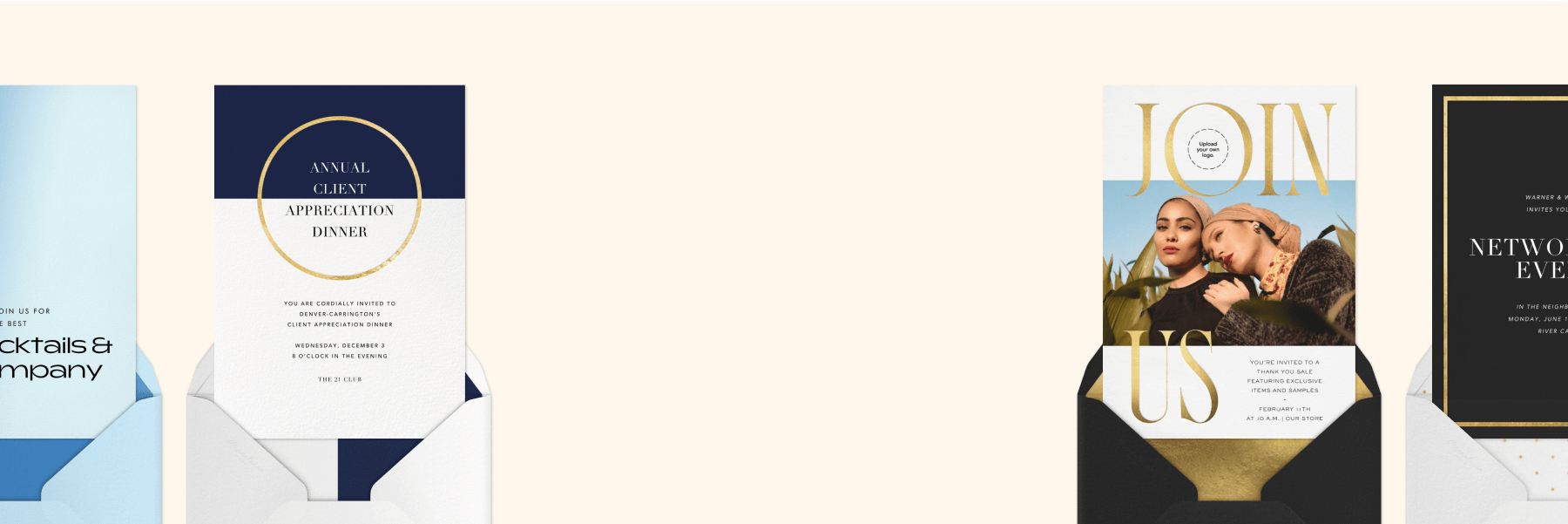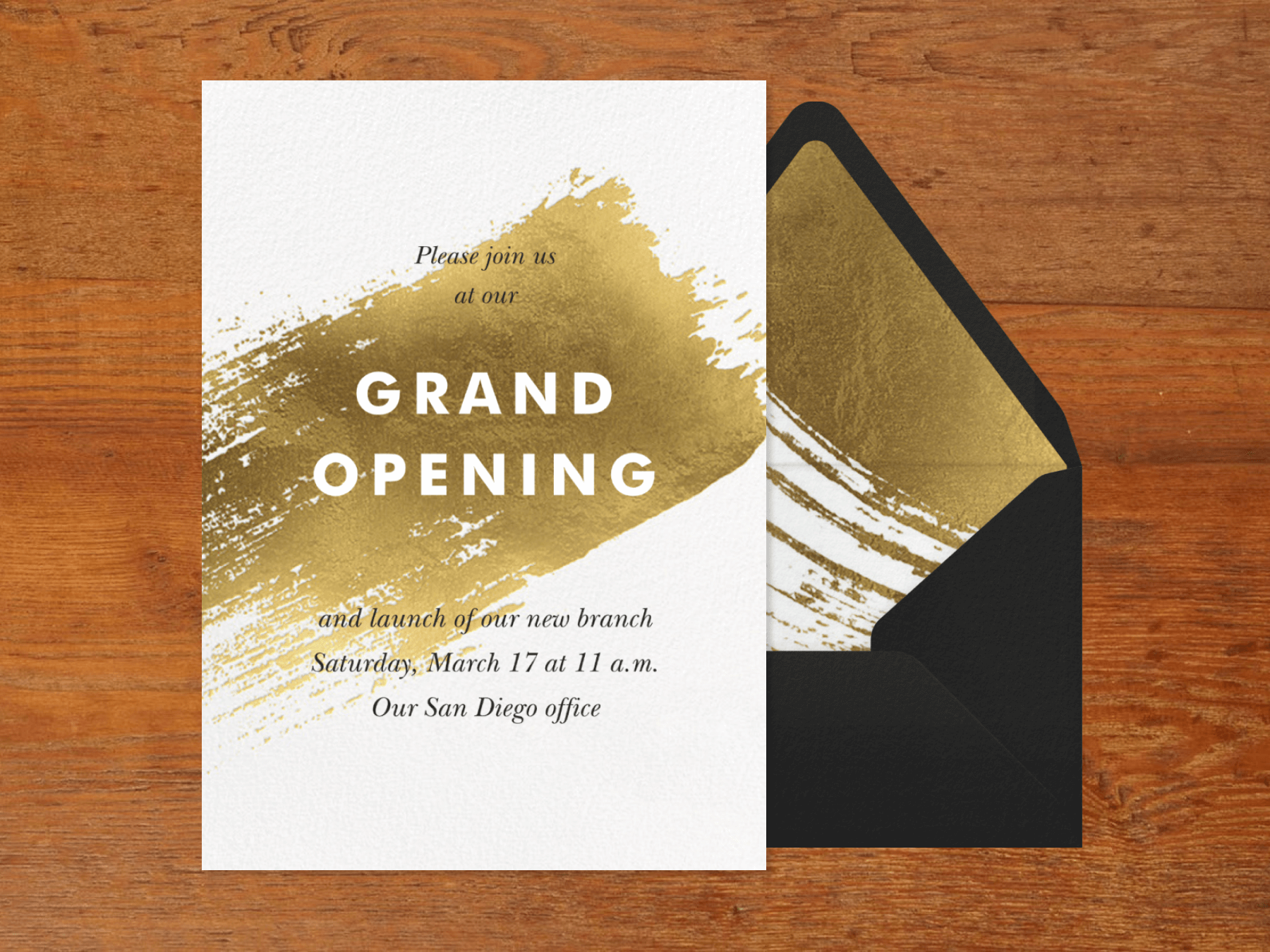20 event marketing strategies and ideas for 2025

You’ve just created a new line of products and need to find the best way to get it out and into the public’s hands. Emails, social media ads—you’ve got it all covered. But there’s something else you can do to engage with your existing customers and entice new ones: event marketing. Event marketing involves promoting a brand, product, or service through live or digital experiences or events. The event is the key marketing tool—it’s a form of experiential marketing meant to forge a direct connection between a company and its target audience.
To determine which type of event is right for you, review different event marketing strategies and their benefits. It takes more than choosing the right business event invitation (though that’s an important step!), and we’re here to walk you through the process. This guide will introduce you to event marketing and its benefits, explain how to create an event marketing plan, and offer some strategies, ideas, and best practices to get you started.
Table of Contents
What is event marketing?
Event marketing is a strategic approach involving some kind of live event that allows you to directly interact with customers or other businesses in order to showcase your brand or product. The main goal of event marketing is to create a memorable experience for customers and attendees—you want them to walk away with a positive impression of your service or product (and hopefully a few products in hand).
The best event marketing strategies range from appreciation events to conferences, pop-up shops, and product launches. Or, you may want to put on a networking event to bring people together while they sample your product. Whatever event type you choose, event marketing generates brand awareness, drives sales, and builds relationships. It also allows you to gather customer feedback or conduct market research.
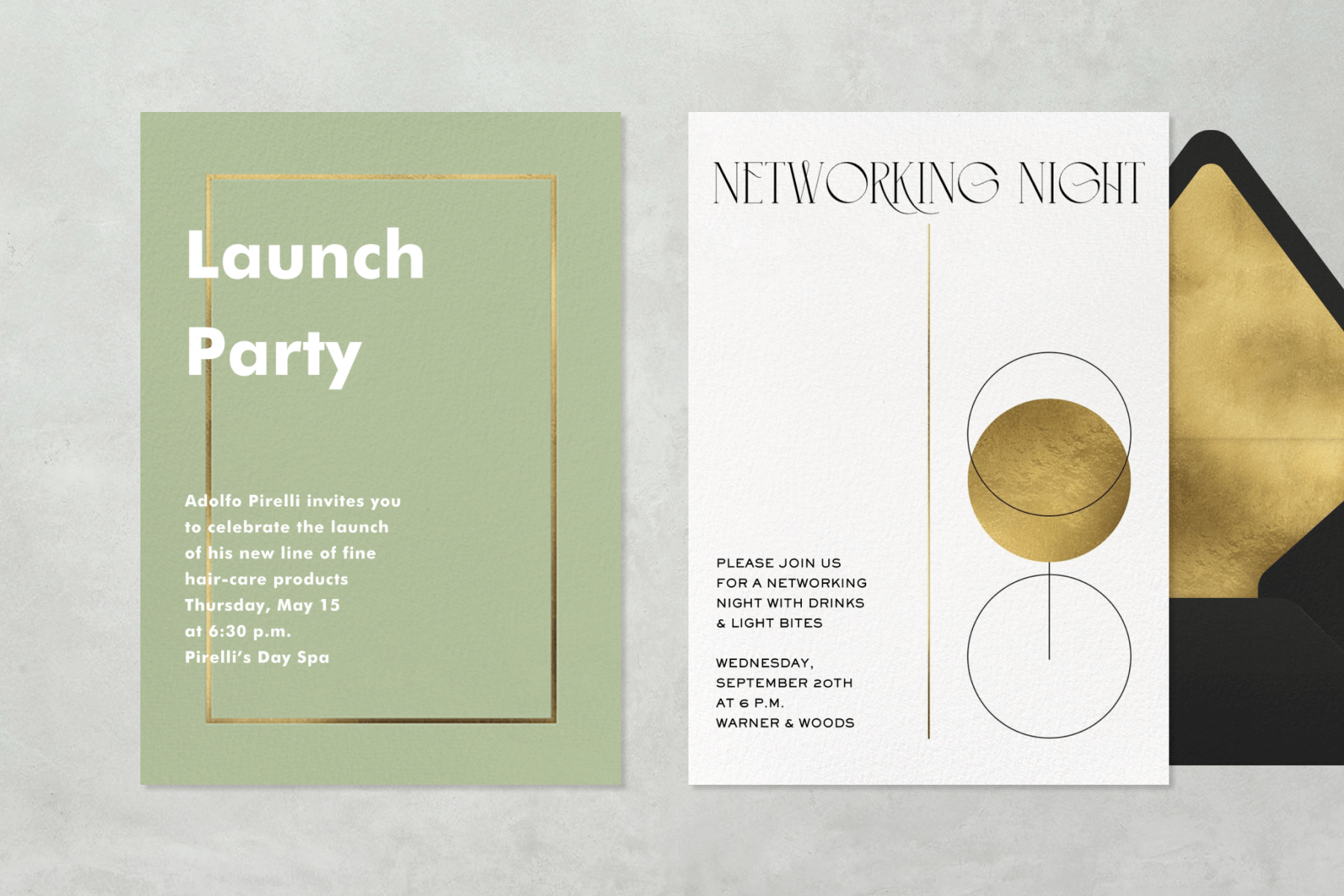
Event marketing strategies can be used for B2B (business to business) or B2C (business to consumer) brands—or both. For example, a conference or trade show is a key B2B event marketing strategy that can connect your brand to other related businesses. It also functions as a B2C event so you can engage with potential individual customers.
Successful event marketing requires careful planning and execution. “Honestly,” says Dorit Phinizy, Director of Events & Sponsorship Sales at Grand Central Terminal, “the most important question before planning an event is, do you have enough time to successfully pull off this event?” She says that, especially if this is your first marketing event, you should have a few months’ lead time. Kara Hoover, Event Operations Manager at One10 Marketing says, “It should take three to six months of planning to do an event—even a small event because there are a lot more details than most people think.”
These details include tasks like:
- Identifying your target audience
- Setting clear objectives
- Establishing your budget
- Setting a timeline
- Designing a compelling experience
- Coordinating logistics
- Promoting the event
With proper planning, event marketing can offer your business a powerful platform to connect with your target audience in a personal and memorable way—and open the door to business growth.

Benefits of event marketing
Event marketing has a few benefits that other marketing avenues don’t offer to the same degree.
- Brand awareness: When you build a marketing event around your product and include product education as an important element, you’ve created a platform to spotlight your brand. For small businesses especially, this can be game-changing as it creates inevitable buzz around your services and brand. Sometimes this can happen even before the event, such as with a major media press release. If you work with the right media outlet for your audience, you can spread the word about your brand and build their anticipation.
- Targeted engagement: Small and big businesses alike will reap the benefits of engaging with their target audiences through event marketing. For small businesses, connecting directly with their audience and building that rapport through face-to-face interaction boosts their credibility and recognition. For larger businesses, these are often the only times corporations can interact directly with their audiences and build relationships. That kind of personalized engagement can result in a growth in customer loyalty.
- Lead generation: From collecting email addresses through online ticket sales for a concert event to hosting a pop-up shop with an email signup on hand, marketing events provide you with the contacts of people who have shown an interest in your product or brand but who may not buy during the event. This is called lead generation, and it allows you to nurture potential customers after the event.
- Industry leadership positioning: If you host a networking social event like a tradeshow or conference, you’re bound to be recognized as an industry leader or thought expert. This can amplify the reputation of your business—customers, colleagues, and competitors will see you as an authority—especially if you provide learning opportunities or facilitate dialogues between different voices with your target audience watching.

How to create an event marketing plan
While every event is unique and planning should adapt to your unique situation the following guidelines will help you create an event marketing plan. You can also refer to our corporate event planning guide for more helpful information and tips.
1. Define objectives using SMART goals
Clearly outline your objectives—whether to increase brand awareness, drive sales, or generate leads—using SMART goals, which are specific, measurable, achievable, relevant, and timely. Use your SMART goals as your North Star during planning, and reflect back on them to help you determine whether the event was a success.
2. Identify your target audience
You can’t move forward without knowing who you are trying to attract, says Ms. Hoover. “You have to find out who your audience is and reinforce what the goals are at every turn throughout the event.” Tailor your event to your target audience’s preferences—if your primary target audience is Gen Z, lean heavily on digital outreach. If it’s an older crowd, use more traditional marketing avenues, like email, newspaper, and direct mail outreach.
3. Determine your budget
Establish a budget that covers all aspects of your event, says Ms. Phinizy. “You have to consider not just what the public sees as part of the event—but all of the things in the back of house as well,” from the venue, catering, and staffing to your marketing materials, technology, and follow-up tasks. Be realistic about your budget, but revisit it often to assess whether there’s wiggle room. Check in with internal stakeholders periodically to see if you can increase the budget, or look for corporate or local sponsors to provide money or in-kind donations.
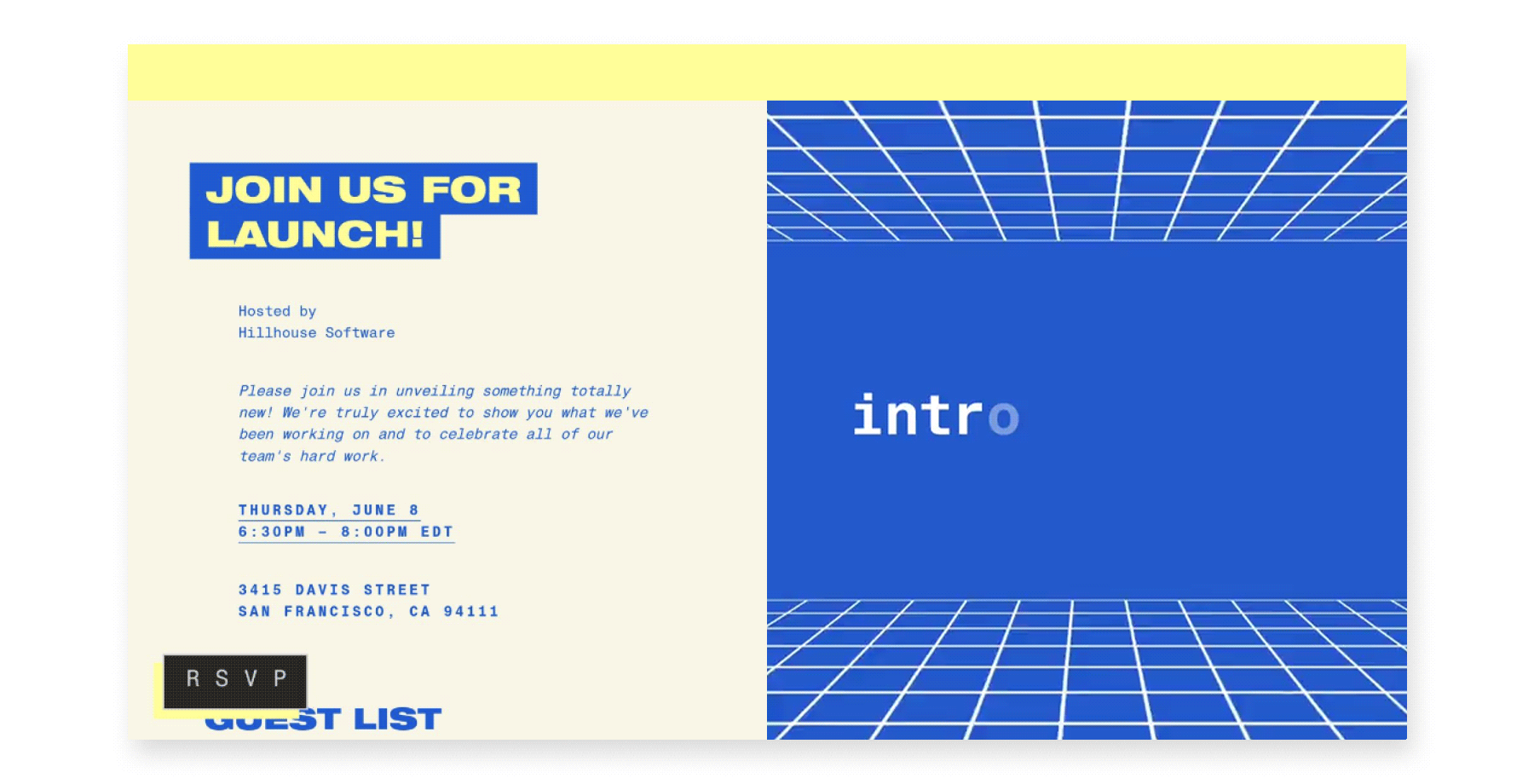
4. Choose the type of event to host
Choose an event that aligns with your objectives and target audience. Some options you might consider include trade shows, conferences, luncheons, product launches, seminars, sporting events, and art exhibits—the list goes on. Choose the event that best suits your goals, the locations available to you, the duration of the event, and other logistics. For example, a workshop or customer appreciation event works great for engaging with a smaller audience, while a festival or tournament might be ideal for a larger, wider audience.
5. Decide on the timeline
Give yourself ample time to effectively organize your event, and within that time frame, plot out the different tasks, deadlines, and milestones leading up to the event, from pre-event planning and logistical arrangements to marketing and post-event follow-ups. As you create your timeline, Ms. Hoover suggests starting with what you don’t have control over: “Those are the deadlines imposed by the venues or the show—they’re the ones you start with, and you build from there.”
6. Develop your marketing strategy
Marketing and promotion are fundamental to any event. Develop a comprehensive marketing strategy for your event, including creating and sending invitations and harnessing online and offline marketing channels like social media, email, press releases, printed posters, paid advertising, and partnerships.
7. Identify the right event technology
Event management tools and planning platforms help keep you organized, with everything accessible in one place. They can help streamline registrations, ticketing, and communications. Look no further than Paperless Post invitations loaded with guest management tools that track RSVPs in real-time and communicate with invitees before and after the event. Use a customizable Link Block to send guests directly to your event website or ticketing page, and use other Blocks to share additional details. Send invitations via text, email, or shareable link you can embed in an email CTA, attach to a calendar invite, or share via a messaging platform like Slack.
8. Manage the logistics
Keep track of all logistical details, from catering and audiovisual equipment to stage setup and delivery timelines. On the day of the event, prepare a production schedule that spells out every step of the day, from deliveries to cleanup and everything in between. Ms. Phinizy requires such a schedule for all of her events, explaining, “I want that document to be as detailed as possible so that anyone walking through the space could pick up that schedule and manage the event from where you’ve left off.” Provide a copy to staff and volunteers, and have a contingency plan for unexpected hiccups.
9. Evaluate the event based on your goals
Once the event is over, use your SMART goals (defined earlier) to measure how well your event went. Did you hit your attendance mark, make enough sales, or collect customer contact information? Analyze your data after the event, and evaluate your performance with your original objectives in mind to identify areas for improvement.
10. Conduct a post-event follow-up
Follow up with your attendees, donors, and sponsors as soon as possible after the event—and make it personal. After a nurse summit, Ms. Hoover made sure that “when we sent out a thank you, it came from the chief nursing officer. It linked to a blog that had his key takeaways from the conference that might be of interest to the attendees.”
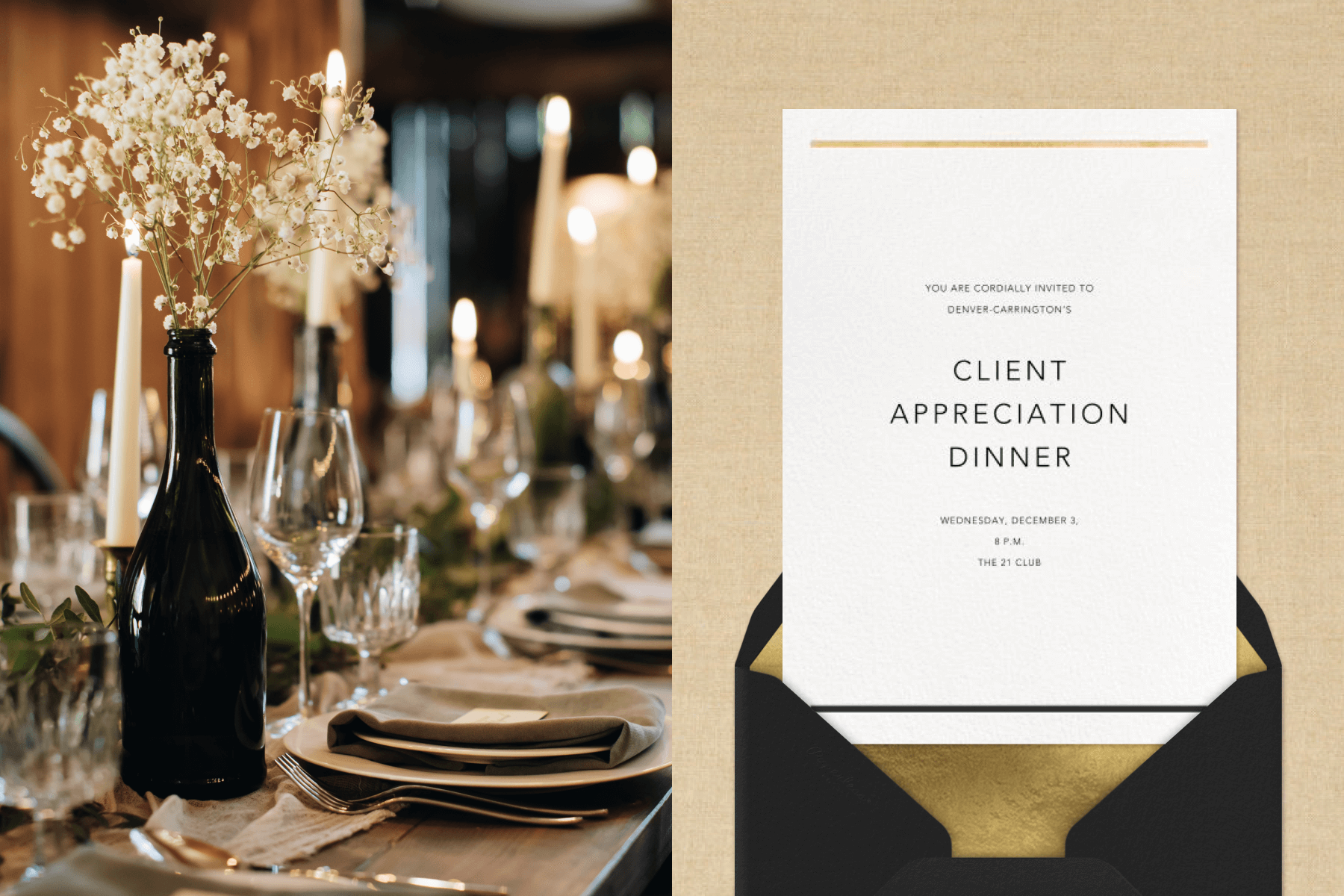
Event marketing strategies and ideas
The best event marketing strategies are the ones that fit your business, needs, and style. The following ideas include small, mid-, and large-scale events. One of them might just hit the sweet spot for you, or help you brainstorm your own perfect event marketing idea.
11. Pop-up shop
A temporary shop set up in a high-traffic area is a great way to increase brand visibility and awareness and create a buzz around your product or business. For many consumers, a pop-up is irresistible, which is why these events have a high potential for success—especially if you have a hot new product that’s suitable for a physical retail setting. Choose a location that easily reaches your target audience, like an empty storefront or a kiosk in the mall, or partner with an art gallery or a business that complements yours. For example, if your product is athletic gear, partner with a local gym for your pop-up.
12. Community event sponsorship
Instead of organizing an entire event yourself, sponsor a local community event to give your brand recognition and reputation a boost. Supporting a local charity 5K, music festival, or school fair is a great way to help out local organizations—and win hearts. On the other side of the coin, says Ms. Hoover, “If you have a small events budget, you can get a sponsor to come in and supplement.” Display your brand logo prominently at the event, whether at a booth or in promotional materials and interact with attendees to increase visibility. This is an effective strategy for businesses without a tangible product.

13. Customer appreciation event
You have loyal customers who have made your business a thriving venture. Why not host an exclusive event just for them to show your appreciation? It doesn’t have to be elaborate or expensive—an invite-only, after-hours cocktail party in your store (check your local liquor laws first) is an easy way to say thanks and intimate gatherings can even hype the exclusivity factor of your brand and create curiosity in others. If you want to be more inclusive, hold a two-day (or longer) customer appreciation sale with special events, like a silent auction, raffle, live music, or a mini-fashion show. “Any sort of demonstration, especially something with sound and music, really draws a crowd and changes the atmosphere,” explains Ms. Phinizy.
14. Webinar
Crossover into the virtual world, and host a remote or hybrid event online. Virtual events enable you to transcend geography, reach a wider audience, and offer a unique digital experience. Host a live webinar, conduct a demonstration, or livestream a panel discussion on a topic relevant to your business. Engage with participants through Q&As and polls. Digital events are valuable for situating your brand as an industry leader, and for making connections and collecting leads.
15. Tradeshow booth
Setting up a booth at an industry trade show is a mid-scale event marketing strategy with potentially high returns. Design an eye-catching display, create engaging demos, consider small giveaways, and have enough staff available to comfortably engage with attendees. A trade show is an opportunity to pitch your brand, generate leads, and build relationships.
16. Thought leadership conference
If you have the budget and resources, host a conference yourself. Invite industry leaders, keynote speakers, and panelists to share their insights and trends. Throw a cocktail reception to kick off the event, and provide plenty of other opportunities for attendees to network.

17. Plan a fundraiser
Partner with your favorite charity, and plan a fundraising event that aligns with your brand values and charitable goals. Put on a gala, hold a silent auction, or simply pledge to donate a portion of the proceeds from a one or two-day sales event to the charity.

Event marketing best practices
Even the best event marketing plan can improve with certain best practices. Here are a few best practices to ensure your foray into event marketing is met with the utmost success.
18. Create compelling event branding
You have a story to tell with your product or service, so make your overall event branding convey that message. The branding for your event should reflect your identity and values and resonate with your audience. From logos and graphics to catchphrases and promotional content, keep your branding consistent across all forums.
19. Offer value
Make sure your attendees walk away from the event with something positive: a tangible product, a memorable experience, or a desire to learn more or get involved. Hand out merch or swag, send them away from a seminar with handouts and resources, or fill a family’s day with fun, interactive activities (and memories).
20. Take a multi-channel marketing approach
Market your event through multiple channels to reach the widest possible audience. Target your communications based on the channel, whether print media, radio spots, ads on social media, or email marketing.
Spread news of your marketing event with Paperless Pro
Event marketing is about creating experiences that elevate your brand and engage your audience. Whether it’s a small pop-up shop or a large gala, any marketing event presents an opportunity to build connections, raise your brand profile, and sell your products or services.
Paperless Pro helps you make an impression from the very first open with customizable invitations for a wide range of business events. Plus, our intuitive guest management tools make keeping track of headcount—and catering to your specific guest list—a breeze. Whatever marketing events you have up your sleeve, we’ll help you reach your people.
Find sophisticated, business-minded designs that streamline planning and impress guests.
